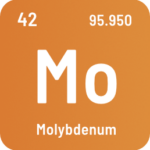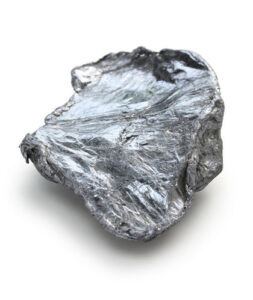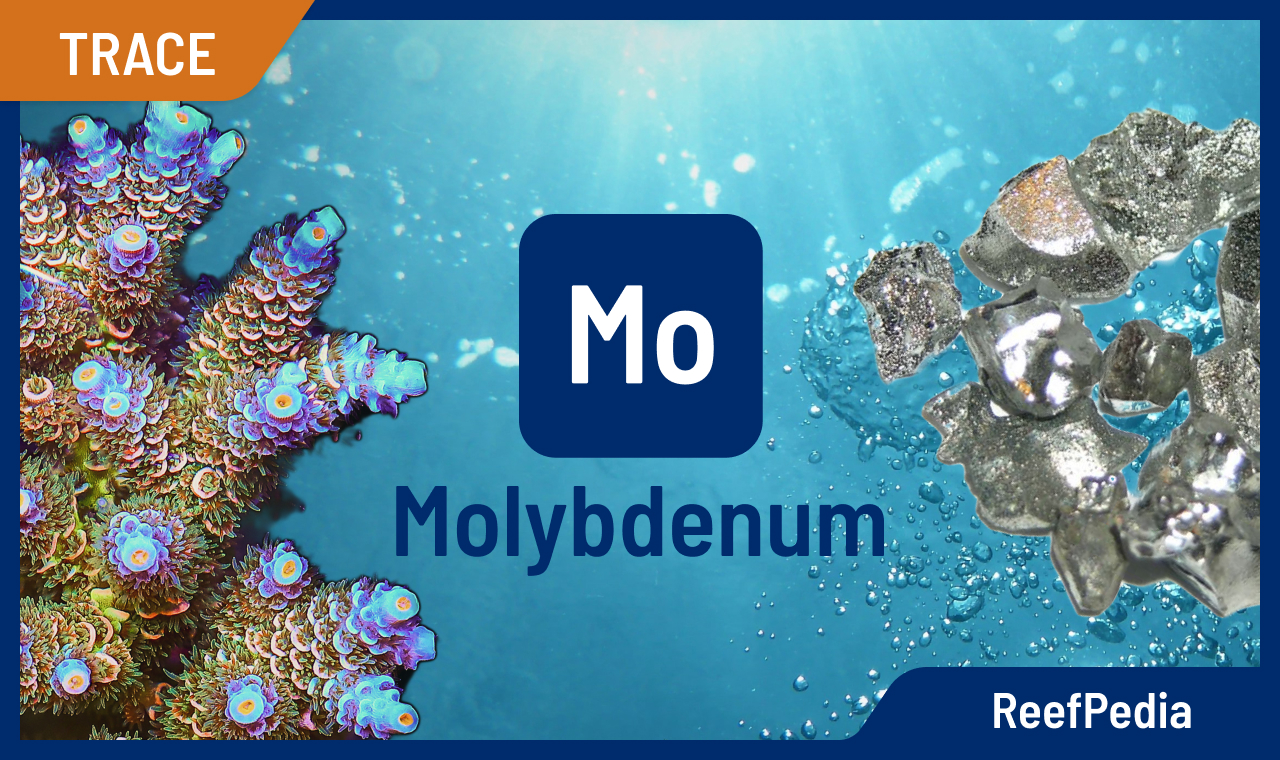What is MOLYBDENUM (Mo)?
Molybde num (Mo, Latin molybdenum) – a chemical element from the group of transition metals. The name comes from the Greek word “molybdos” an
d literally means “similar to lead.” Molybdenum is one of the rarest elements on Earth, and does not occur in nature as a free metal. It is characterised by its silvery-white colour, high hardness and good electrical conductivity. Molybdenum occurs in chemical compounds at various oxidation levels, which are components of minerals such as wulfenite, powellite and molybdenite. It is not chemically reactive, and its 33 isotopes are also known. Like vanadium, molybdenum is a transition metal belonging to the group of so-called “dynamic” elements, essential in many enzymatic processes, in the nutrient cycle and as part of cellular functions.
Molybdenum is also found in seawater, belongs to the group of micronutrients, and its optimal content in seawater is 8-12 μg/l. It is the most widespread transitional element in the ocean and occurs under oxygenated conditions at stable levels. In the absence of sufficient oxygen, a situation occurs in which molybdenum is removed from the ocean while being enriched in anaerobic sulphide deposits.
num (Mo, Latin molybdenum) – a chemical element from the group of transition metals. The name comes from the Greek word “molybdos” an
d literally means “similar to lead.” Molybdenum is one of the rarest elements on Earth, and does not occur in nature as a free metal. It is characterised by its silvery-white colour, high hardness and good electrical conductivity. Molybdenum occurs in chemical compounds at various oxidation levels, which are components of minerals such as wulfenite, powellite and molybdenite. It is not chemically reactive, and its 33 isotopes are also known. Like vanadium, molybdenum is a transition metal belonging to the group of so-called “dynamic” elements, essential in many enzymatic processes, in the nutrient cycle and as part of cellular functions.
Molybdenum is also found in seawater, belongs to the group of micronutrients, and its optimal content in seawater is 8-12 μg/l. It is the most widespread transitional element in the ocean and occurs under oxygenated conditions at stable levels. In the absence of sufficient oxygen, a situation occurs in which molybdenum is removed from the ocean while being enriched in anaerobic sulphide deposits.
Importance of molybdenum in marine aquaristics
In comparison to other trace elements, molybdenum is found in seawater in relatively large amounts, and it is of vital importance to organisms. The biochemical benefits of molybdenum are varied and complex, as molybdenum occurs at different oxidation levels, and thus it is present in the environment in different forms. The best absorbed form of molybdenum by organisms is the molybdate ion MoO42-. It is incorporated as a molybdenum cofactor into some enzymes (several steps). Molybdenum participates in many enzymatic processes in the nutrient cycle and is an activator of a large number of enzymes, as well as a support product of metabolic processes. It is a component of at least 50 bacterial enzymes, among others, and is a cofactor of most animal and plant nitrogenases (nitrogenase is a bacterial enzyme associated with assimilation* of nitrogen). Another important role of molybdenum is its strong influence on varied coloration in corals. It plays an important role in coral coloration, and the best effect can be obtained when vanadium is present in the seawater alongside molybdenum. For best results, the optimal ratio of vanadium to molybdenum is about 1:3 – 1:4. Molybdenum also regulates copper toxicity in invertebrates; at its proper concentration (8-12 μg/l), moderately elevated concentrations of copper (Cu) are better tolerated by animals. Another particularly important function of this element is to protect animals when exposed to high levels of light radiation. A sufficiently high concentration of molybdenum helps protect corals from light stress. Light stress in corals occurs especially in highly illuminated tanks or when operating with a dominant component of blue radiation. Molybdenum prevents corals from “shifting” quickly. Other aspects of molybdenum’s importance in seawater are also being studied, including its isotopes (different forms of the chemical element’s atoms, differing in the number of neutrons in the nucleus). Molybdenum can actively participate in many biological processes, and the fractionation of its isotopes in the coral skeleton is probably related to some biological activities. Literature reports indicate that diurnal variations in molybdenum concentration and the ratio of two of its isotopes in seawater are noticeable and not random with changes in: temperature, pH, dissolved oxygen content or dissolved inorganic carbon content. High molybdenum concentrations and low ratios of its two isotopes were recorded during the day, and low molybdenum concentrations and high ratios of its two isotopes at night. This means that corals tend to absorb more Mo from seawater at night. The amount of molybdenum absorption into the skeleton depends on the coral species. These data suggest that Mo isotope fractionation in the coral skeleton is related to coral biological activities such as respiration.
Problems associated with excess or deficiency of molybdenum in seawater
Low molybdenum concentrations lead to sulphur assimilation problems in animals and reduced growth. Molybdenum deficiency should be avoided because without it, nitrate reduction is not possible. The resistance of corals to moderate exceedance of recommended copper levels and their protection from intense light is also reduced. The maximum effect of animal benefit is achieved already at molybdenum levels of about 10-12 µg/l. Further increases in molybdenum concentration provide no benefit. In contrast, high molybdenum levels can promote the growth of cyanobacteria in the absence of inhibitors and with too high an organic load. However, high molybdenum alone is not responsible for this. Scientific studies indicate that molybdenum has low toxicity to many species of marine animals and also to the microalgae I. galbana or the diatom Phaeodactylum tricornutum.How to protect the aquarium?
Check the molybdenum content regularly and keep it at the right level. We recommend that you keep molybdenum at a level of 8 – 12 μg/L, with the optimal value we recommend being 10 mg/L. This level of molybdenum in seawater ensures healthy animals and beautiful coloration. The most accurate and reliable method for determining molybdenum is ICP-OES analysis. The Inductively Coupled Plasma Optical Emission Spectrometry (ICP-OES) technique is the most accurate analytical method for analyzing the elemental composition of seawater.Indicators of abnormal molybdenum levels in marine aquariums
Deficiency:
- Poor growth
- Dull colors
- Decreased resistance to light stress
Excess:
- Cyanobacteria growth
Recommendations
To ensure adequate levels of molybdenum in your aquarium, you should systematically test it and ensure that it is at the right level (8-12 µg/l). In the case of molybdenum, we speak of an overdose only when its values reach or exceed 40-50 µg/l. Only values at this level are relevant for animals in the marine aquarium. The most common causes of exceeding the recommended level of molybdenum: excessive doses of administered liquids (check the dosing parameters on dosing pumps), improperly prepared salt, natural sources such as plankton and frozen foods or mixed feeds. Find and eliminate the cause of the problem and lower the value of this parameter in the water. Perform up to 6 water changes. It is recommended to change about 15% of the aquarium water volume during each change until the recommended value of this parameter is reached. The water prepared for the change must be characterized by the appropriate level of target salinity. Use salt with the correct parameters and composition suitable for the ICP test. Other alternative ways to reduce molybdenum are activated carbon as well as aluminum-based adsorbers. If the molybdenum level is below 8 µg/l, we recommend using molybdenum-containing products to equalize the level. To ensure a constant level of molybdenum in the marine aquarium, we recommend systematic supplementation of this element, depending on the coral population in your aquarium. *Assimilation, or assimilation. Organisms have the ability in the process of converting substances and materials taken from the environment into substances for their own needsAbout author

Magdalena Metzler
Privately, I am a mother and a lover of nature and sport. My main interest is quantum chemistry, which hides a whole lot of unsolved mysteries and connections, which is extremely exciting from a scientific point of view.
In my scientific career, I have conducted international projects focused on innovative solutions for many branches of business, e.g. automotive, construction, and now, of course, marine aquaristics.
Working at Reef Factory gave me a passion for marine aquaristics, which I can develop every day, building a chemistry department and creating products that will help aquarists take care of tanks and ensure the highest safety of animals. One of the most exciting memories of working at Reef Factory is the commissioning of the ICP-OES spectrometer, which analyzes the elemental composition of seawater. The method of analysis in ICP is based on an analytical technique, which is a combination of my passion for quantum chemistry and marine aquaristics.
I hope you find my articles on ReefPedia interesting and helpful! Happy reading :))

